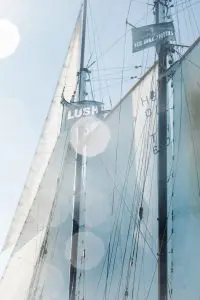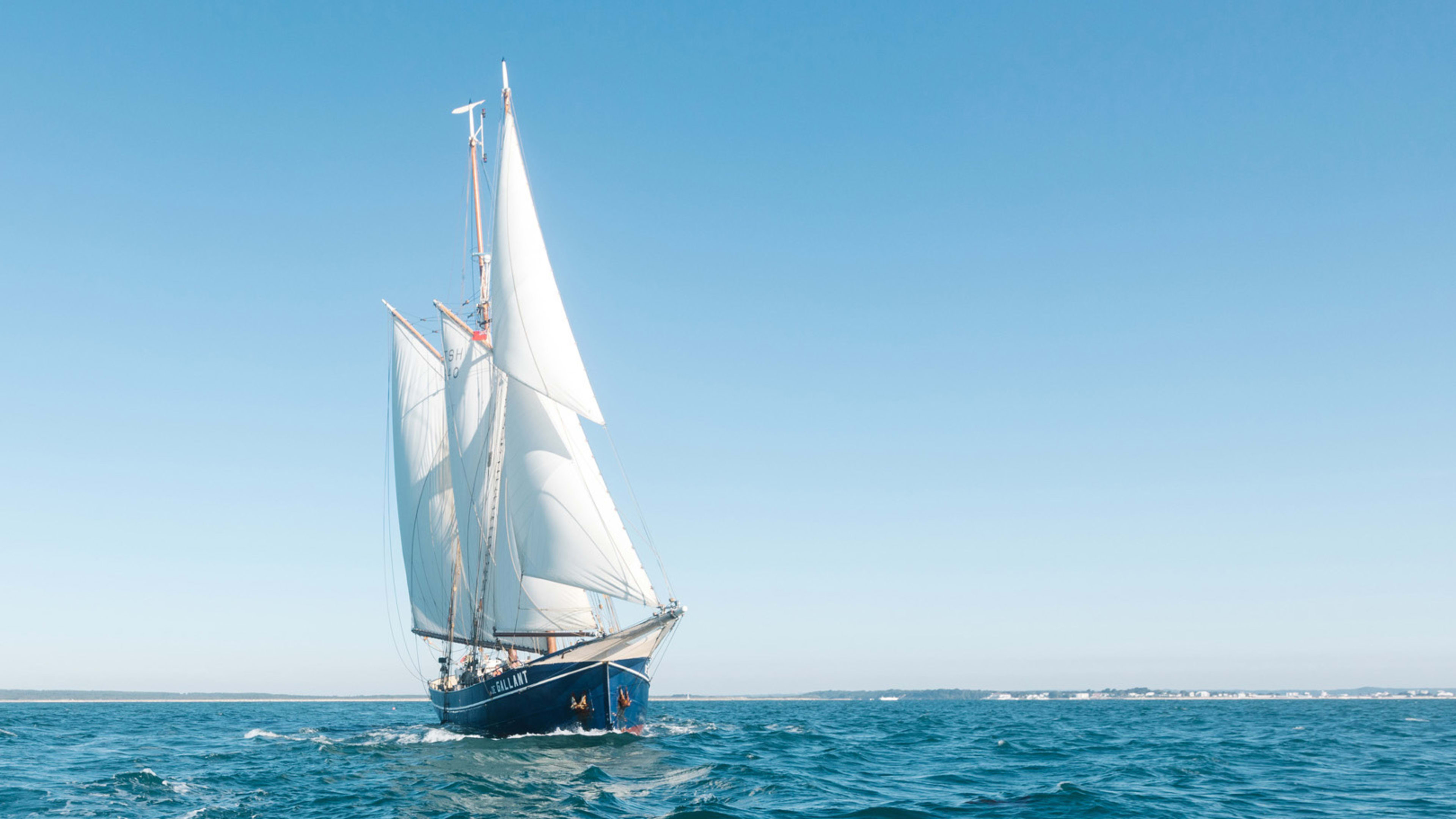In early July, when the cosmetics company Lush received a shipment from its suppliers, it arrived on a sailing ship, not a cargo ship or long-haul truck. The company, known for its soap and shampoo, is one of a growing number of businesses exploring the use of sailing—from traditional ships to redesigned, tech-heavy vessels with sails—to help cut emissions on some trips.
“Transporting goods by sail cargo is a good fit with our ethics and ambition to reduce harm to the planet as it’s largely carbon neutral,” says Derek Hallé, Trade Compliance Manager for Lush UK. The vast majority of products that move globally, from jeans to bananas to cars, travel on cargo ships that generate around 3% of global emissions (for context, aviation, another very polluting industry, generates 2%).

Lush partnered with New Dawn Traders, a company that coordinates deliveries by sailing ship, to set up a delivery from suppliers in Portugal, where the company sources compostable packaging made from cork, with stops in France and Belgium to collect salt and moss. The trip took four weeks; a direct route from Portugal to Lush’s headquarters in Poole, a town on the southeastern coast of England, would have taken half the time. And both are longer than the five days it would have taken on a truck, though the company was able to accommodate the extra time. “Working with our suppliers and procurement teams we were able to build in the necessary lead times into our purchase orders to ensure goods arrived in Poole at the required time,” says Hallé.
There are other challenges to making more use of traditional sailing ships. Many ports, adapted for modern container ships, stopped accepting the older ships and would have to make changes to accommodate them. Suppliers may not be near one of the ports that can accept them, and driving hundreds of miles to get to a ship would negate the benefits of sailing. There are relatively few transport companies offering sailing ships as an option (New Dawn Traders helped launched the Sail Cargo Alliance to help bring them together). Traditional ships are also more expensive than driving a truck, at least for now. “By starting to encourage more companies to make use of sail cargo we could start to see a reduction in costs,” Hallé says. Traditional schooners also have limited cargo space, and though their use can increase, they are unlikely to replace more than a tiny fraction of the travel that happens now on massive cargo ships.

And others are also working on redesigning what a sailing ship could be. Neoline, based in France, is preparing to build ships that are 136 meters long—longer than a football field—that have massive sails and can transport 500 cars. The automaker Renault plans to be one of the first companies to use the ships on trans-Atlantic journeys. “We want to achieve zero-emissions shipping in an industrial way,” says Neoline CEO Jean Zanuttini. Using wind in sails, he says, is the only viable way now to dramatically reduce emissions from ships crossing the ocean.
By incorporating modern weather forecasts into a computerized routing system, Neoline’s new ships can navigate along a path with the most wind. New materials have made it possible to build bigger sails that can access more power. An auxillary power system will eventually run on hydrogen and solar panels, though the first two pilot ships will use diesel electric power. The first vessel is the size of a small cargo ship (called a “ro-ro,” or “roll-on, roll-off,” designed for cars), and Zanuttini says that the company has calculated that it’s already competitive with conventional cargo ships of the same size. As new pollution rules take effect next year that make shipping fuel more expensive, the ships will also become cost-competitive even with engine-powered larger ships that can hold more cargo. The first ships will be slightly slower than their fuel-guzzling equivalents—11 knots versus 15 knots, or a couple of extra days to make it from a port in France to Baltimore. But Zanuttini says that for a journey that takes a couple of weeks, that’s acceptable; the key is being able to predict the day of arrival accurately and running a regular service that departs each week. The company plans to soon begin building its first two ships to test the technology and business model before scaling up. While sails won’t work on less windy routes, the ships could soon also start making trips on key routes such as China to the West Coast.
Recognize your brand’s excellence by applying to this year’s Brands That Matter Awards before the early-rate deadline, May 3.
